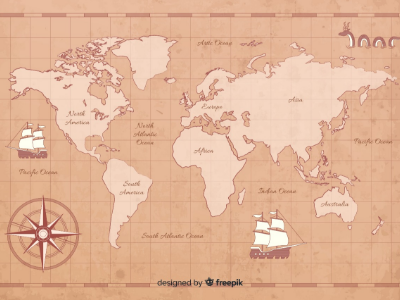Open your drawer. Somewhere in there lies an old phone, a broken charger, or perhaps a once-expensive gadget you couldn’t bring yourself to throw away. Now multiply that by 1.4 billion people—and you’ll begin to see the scale of India’s silent crisis: electronic waste (e-waste).
This “junk” is not just a household inconvenience; it is a climate, economic, and strategic risk hiding in plain sight. Each discarded smartphone or laptop is a cocktail of valuable metals—copper, aluminum, cobalt, lithium, and rare earth elements (REEs). Mismanaged, these devices leach toxins into soil and air. Recycled responsibly, they can fuel India’s clean energy transition and help achieve its Net Zero 2070 target.
Yet today, most of India’s e-waste ends up in unsafe informal recycling hubs, and the critical materials inside them are lost forever. Worse, India depends heavily on imports of REEs, especially from China—raising national security and supply chain concerns as Beijing tightens export controls.
In this blog, we’ll explore how e-waste management is not just about sustainability—it’s about risk management. We’ll examine the risks India faces if it ignores this problem, and how innovation and smart electronic waste recycling solutions can turn drawers full of forgotten electronics into a strategic advantage.
The Silent Crisis: What’s in Our Drawers
India is among the top global generators of e-waste, producing 1.6–1.8 million metric tons annually. Globally, e-waste is growing five times faster than documented recycling rates.
And yet, in India, only about 5–10% of e-waste flows through formal recycling channels. The vast majority—90–95% depending on the source—goes to the informal sector, where workers use crude methods like acid baths and open-air burning to extract metals.
The consequences are three-fold:
- Health & Environment: Informal recycling exposes workers (often women and children) to lead, mercury, and dioxins. Air and water pollution spreads to surrounding communities.
- Climate: Unrecycled e-waste means continued demand for virgin mining, which is energy-intensive and carbon-heavy ultimately heightening climate risk.
- Economy: India loses out on billions in recoverable metals.
That old smartphone you hoard isn’t just clutter—it’s a piece of India’s hidden resource crisis.
Environmental & Climate Risk: E-Waste vs. Net Zero
From a risk management perspective, unmanaged e-waste is a transition risk —a barrier to India’s climate goals.
Consider the numbers:
- Recycling aluminum saves ~95% of the energy used in primary production.
- Recycling copper saves ~85%.
- Recycling lithium-ion batteries reduces lifecycle emissions by 17–61%.
Failing to recycle means India must continue to rely on carbon-intensive mining and imports, undermining its Net Zero 2070 pledge.
Climate finance experts already warn that countries lagging in circular economy adoption will face higher financing costs, stricter ESG scrutiny, and reduced competitiveness. In other words, if India doesn’t get its e-waste act together, it risks transition penalties—from investors, trade partners, and the climate itself.
Strategic & Supply Chain Risk: The Rare Earth Dependency
Here’s where the e-waste story takes a geopolitical turn.
Rare Earth Elements (REEs) like neodymium, praseodymium, and dysprosium are essential for EV motors, wind turbines, smartphones, and defense systems. India’s clean-tech and renewable energy ambitions rely heavily on these metals.
But there’s a catch: China controls 60–70% of global REE supply and processing. Recently, Beijing has imposed export controls on REE-related technologies and permits on graphite exports. While not a blanket ban, these moves signal how quickly critical mineral supply chains can become geopolitical weapons.
India has some reserves (Kerala, Odisha), but mining them is fraught with environmental risks and regulatory hurdles. For now, India is import-dependent.
And here’s the kicker: e-waste already contains many of these REEs, embedded in magnets, hard drives, and circuit boards. Failing to recycle them is not just a climate problem—it’s a national security risk.
Economic & Business Risk: Compliance, Reputation, and Financial challenges
From a corporate risk management lens, e-waste mismanagement creates three categories of risk:
- Compliance Risk
- Under the E-Waste (Management) Rules, 2022, producers are legally required to ensure recycling through Extended Producer Responsibility (EPR).
- Failure means regulatory penalties, fines, and potential bans.
- Reputation Risk
- Global investors and customers demand ESG compliance. Brands linked to unsafe informal recycling risk reputational damage.
- As supply chains become transparent, “dirty recycling” is a brand liability.
- Financial Risk
- India loses billions in unrecovered metals annually.
- Companies face higher costs importing lithium, cobalt, and REEs instead of sourcing from domestic recycling streams.
- This necessitates robust financial risk management.
In short: ignoring e-waste is a triple threat to corporate India—legal, reputational, and financial.
Policy & Governance Risk: Strong Rules, Weak Enforcement
India has ambitious e-waste laws, but enforcement remains patchy. The E-Waste Rules 2022 mandate:
- Centralized registration of producers.
- Collection targets under EPR.
- Authorized recyclers for compliance.
Yet loopholes persist:
- Weak monitoring of informal sector flows.
- Low consumer awareness on how to recycle.
- Limited recycling infrastructure outside major cities.
This creates governance risks: well-intended rules without effective enforcement breed non-compliance and black markets.
For policymakers, stronger enforcement, consumer awareness campaigns, and support for formal recyclers can convert e-waste from a compliance headache into a climate solution.
Human & Social Risk: The Informal Sector Dilemma
Perhaps the most overlooked risk is human.
Today, India’s informal recycling sector employs hundreds of thousands—often women and children. They dismantle devices by hand, burn wires for copper, and soak components in acid baths.
The risks:
- Health Risks: chronic respiratory issues, lead poisoning, skin diseases.
- Social Risks: child labor, unsafe working conditions, and lack of formal wages.
- Economic Risks: low-value recovery compared to modern tech-driven methods.
Transitioning these workers into the formal recycling economy is critical—not just to improve lives, but to prevent social backlash against stricter enforcement. It’s a just transition issue embedded in India’s climate story.
Risk Management Frameworks: How to See E-Waste Differently
To bring all these angles together, let’s map e-waste against core risk management categories:
- Environmental Risk: toxins + carbon emissions from virgin mining.
- Transition Risk: failure to align with Net Zero = higher ESG financing costs.
- Supply Chain Risk: China-centric REE dependency.
- Compliance Risk: penalties under E-Waste Rules 2022.
- Reputation Risk: ESG-conscious investors and consumers.
- Social Risk: unsafe informal workforces.
- Strategic Risk: vulnerability in defense, EV, and clean energy supply chains.
This is why the phrase “The hidden risk in your drawer” isn’t just a metaphor—it’s a literal mapping of India’s climate, economic, and security vulnerabilities.
Innovation as Risk Mitigation: The Attero Case Study
Not all is grim. India has innovators proving that with the right risk mitigation strategies, risk can be turned into opportunity.
Attero Recycling, the country’s largest recycler, has developed proprietary clean-tech to extract over 22 metals—including lithium, cobalt, aluminum, and REEs—from e-waste.
Some highlights:
- 98%+ recovery efficiency with 99% purity.
- Recycling of 1M+ metric tons of waste (company claim).
- Expansion plans: scaling REE recycling capacity from 300 tons/year → 30,000 tons/year.
Attero’s model shows how circular supply chains:
- Reduce carbon risk by avoiding virgin mining.
- Hedge supply chain risk by providing local REE capacity.
- Manage compliance risk by giving OEMs EPR-compliant solutions.
- Mitigate social risk by formalizing recycling jobs.
It’s a blueprint for how India can transform a liability into a strategic asset.
The Bigger Picture: From Risk to Resilience
E-waste recycling is not just a green initiative. It is:
- A climate accelerator (cutting emissions through material recovery).
- A strategic hedge (reducing dependence on China’s REEs).
- An economic opportunity (unlocking billions in material value).
- A social imperative (moving workers into safe, formal jobs).
If managed well, it turns drawers full of forgotten phones into levers for:
- Meeting India’s Net Zero 2070 goal.
- Becoming a global hub for REE recycling.
- Building resilient supply chains in EVs, electronics, and renewables.
Conclusion:
The next time you open your drawer and see that old phone, don’t think of it as clutter. Think of it as risk—and opportunity.
For India, e-waste is not just about waste—it’s about managing environmental, strategic, business, and social risks. Companies like Attero show that with innovation, these risks can be turned into resilience.
But for that to happen, we need:
- Stronger policy enforcement and incentives for formal recyclers.
- Corporate responsibility under EPR, beyond box-ticking.
- Consumer participation in recycling, not hoarding.
- Investment in innovation to scale domestic REE recovery.
If India can rise to this challenge, what’s hidden in our drawers could fuel the nation’s clean future. If not, those forgotten gadgets may become the weight that drags down our climate goals and strategic ambitions.
The choice is ours.















